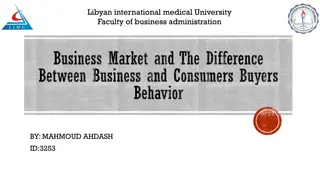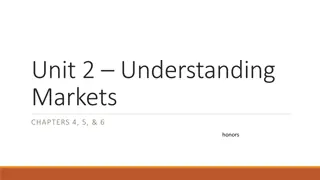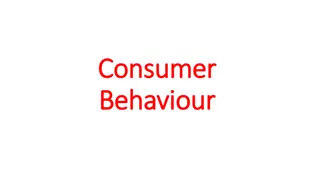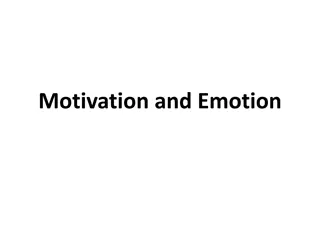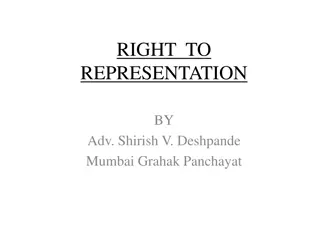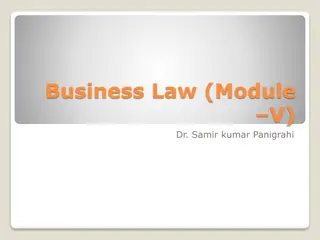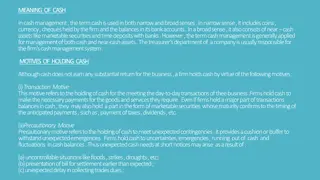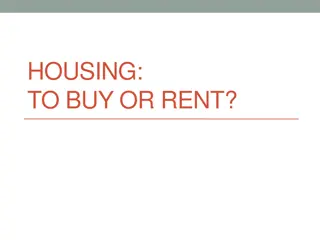Understanding Buying Motives in Consumer Behavior
Buying motives are the underlying reasons that drive consumers to make purchasing decisions. This article explores the meaning, features, classification, significance, and distinction between buying motives and selling points. Learn how buying motives influence product planning, pricing policies, promotional strategies, and distribution policies.
Download Presentation

Please find below an Image/Link to download the presentation.
The content on the website is provided AS IS for your information and personal use only. It may not be sold, licensed, or shared on other websites without obtaining consent from the author. Download presentation by click this link. If you encounter any issues during the download, it is possible that the publisher has removed the file from their server.
E N D
Presentation Transcript
CHAPTER OBJECTIVES Meaning and Features of Buying Motives Classification of Buying Motives Significance of Buying Motives Distinction Between Buying Motives and Selling Points How to Trace the Buying Motives
MEANING A 'motive' is the energy which implies behaviour though it does not give preuse direction to that behaviour. 'Motive' is something which is capable of inducing or tempting a person to act in a particular way. Hence, it is the invisible force that induces a person to act in a distinct way. Motive is the driving force which prompts a person to act to get his need or want satisfied at any rate. It is the root-cause of human behaviour. Motive is a strong desire, feeling, urge, instinct, drive, stimuli, thought, emotion, a belief a tension that makes a person to react in the form of buying decisions. It is the inner feeling or the urge that arouses his interest and finally that interest is transformed in to action. Professor D.J. Duncun defined, "buying motives", as "those influences or considerations which provide impulse to buy, induce action or determine choice in purchase of goods and services".
SIGNIFICANCE OF BUYING MOTIVES They are the Bases in Product Planning and Development They are the Predeterminants of Pricing Policies Buying Motives are Helpful in Designing Promotional Policies Buying Motives are Planks of Distribution Policies Buying Motives Assure Best Use of Firms Resources
DISTINCTION BETWEEN "BUYING MOTIVES" AND "SELLING POINTS" "Buying motive" is the inner feeling or the range that propels a person to buy a particular product. Thus, it is the consumer expectation. We can say that buying motives together give a profile of a consumer, specifications or expectations. On the other hand, "selling point" or a "talking point" is the seller's pack of offers. They can be taken as the sellers statements or specifications. The deal takes place only if the consumer expectations or specifications match perfectly or near perfectly with those of seller's offers or specifications. Thus, buying motives emerge from the buyers while selling points from the sellers. "Buying motives" explain clearly the reason or reasons as to why a customer buys a particular product or services from a particular store. These motives rather buying motives provide a solid base on which the selling house or salesman develops the selling points or talking points. On the contrary, "selling points" explain the reasons as to why a particular product is to be sold to a customer. In case of buying motives, the buyer moves from motives to the product or service while in case of selling points from product to the reasons of sale. In case of "buying motives", the customer has the control over them. That is, he can be contented with a few or pretty large number of buying motives working towards his purchase decision. However, the salesman has no control over buying motives as they are in the minds of a customer. On the other hand, salesman has full control over "selling points" which he can increase or decrease while presenting his sales-talk. Similarly, the customer has no control over the "selling points" as they come from the salesman.
The phrase "selling point" or "talking point" is much more comprehensive than buying motives. In other words, a single selling point is capable of catering to so many buying motives at a time but a single buying motive can not meet the magnitude of any selling points. The sources of "buying" motives are the result of a study of different buying motives of different types of customers. This depends much on the capability skills, imagination, curiosity and keen observation on the part of sales person. As opposed to this, sources of selling points that are mastered by the salesman, his past experience of goods, use of those goods, interaction with peer and senior salesman and the sales journals. The buying motives are the invisible and intangible forces which one can not see, touch, smell, but has to feel and experience. Thus, no body has seen pride, vanity, habit, comfort, lone, affection, jealousy and so on. However, very few of them are visible depending on the perception on the other hand majority of selling points are visible and can be touched, smelt, and so on. Thus, colour, around, design, weight, pattern, properties of product and so on. This speaks of psychological and physical difference between the two.
HOW TO TRACE THE BUYING MOTIVES ? Lending Ears and Opening Eyes Using Past Records and Experience Using Firms Advertising Direct Talks with Customers Sharing Ideas with Colleagues Face and Body Language Nature of Questions Asked by the Customer


